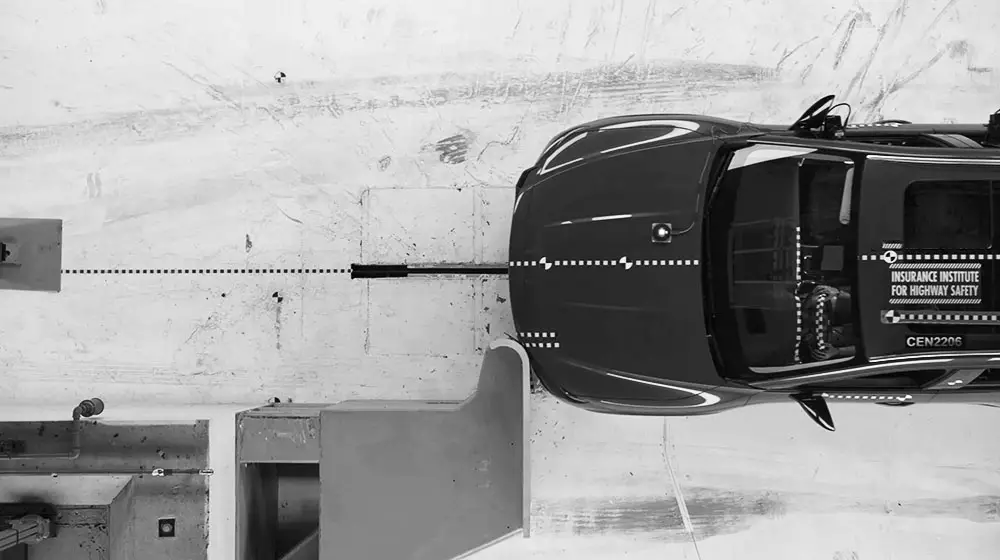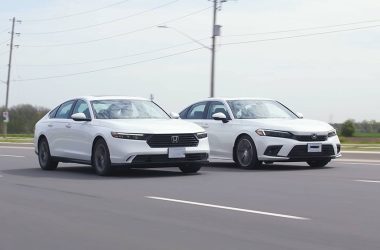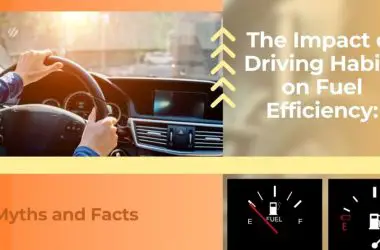When you think of vehicle safety, hatchbacks may not be the first to come to mind. However, modern hatchbacks utilize a wide array of sophisticated safety technologies to protect drivers and passengers.
The term “hatchback safety technologies” encompasses the myriad of active and passive features engineered into these vehicles. Active safety tech, such as automatic emergency braking, blind spot monitoring, and lane keep assist, utilizes cameras, sensors and radar to detect potential hazards and take actions to avoid collisions. Passive safety features like crumple zones and side impact beams provide protection in the event of a crash. Hatchback safety has come a long way due to sturdy steel construction, strategically placed airbags, and rollover protection. With continual innovation, hatchbacks now rank among the safest vehicle segments.
This article will explore the key hatchback safety technologies in further detail, spanning advanced driver aids, impact protection advancements, and more. By understanding the comprehensive safety features found in modern hatchbacks, drivers can better appreciate how these vehicles provide protection on the road.
Crash Avoidance Technologies
The best way to survive a car accident is to avoid getting into one in the first place. Many modern hatchbacks now come standard with crash avoidance technologies that help drivers steer clear of dangerous situations.
Blind Spot Monitoring
Blind spot monitoring systems use radar sensors to detect vehicles located in hard-to-see areas around the hatchback. When a vehicle enters one of these blind spot zones, a warning light will illuminate on the appropriate side mirror. This alerts the driver to the hidden vehicle so they can take preventative action to avoid merging into its path.
Rear Cross Traffic Alert
Backing out of parking spaces can be nerve wracking in any vehicle, but especially in a hatchback where rear visibility is limited. Rear cross traffic alert uses radar sensors to scan areas to the side and rear of the vehicle as it reverses. If the system detects an approaching vehicle or object, it provides both visual and audible alerts to the driver so they can stop in time.
Forward Collision Warning
Forward collision warning systems monitor the road ahead using cameras, radar, or a combination of both. If the hatchback is at risk of colliding with a slowed or stopped vehicle, the system will issue a visual, audible, and/or haptic alert, urging the driver to brake or steer away. Some systems can even pre-charge the brakes to prepare for emergency stopping.
Automatic Emergency Braking
Automatic emergency braking takes collision avoidance a step further. If forward sensors detect an imminent frontal collision and the driver fails to react in time, this system can automatically apply the brakes to avoid or mitigate an impact. The level of braking provided varies between systems, with some bringing the vehicle to a complete stop.
Lane Departure Warning
Tiny hatchbacks are susceptible to wandering in their lanes or even drifting off the road if the driver becomes distracted. Lane departure warning systems monitor the vehicle’s position using a camera and can warn the driver if they start to stray from their lane. Some systems will even make small steering corrections to nudge the hatchback back where it should be.
Lane Keep Assist
Similar to lane departure warning, lane keep assist also monitors the hatchback’s lane position. However, this system is more advanced and can make larger steering adjustments to actively prevent unintentional lane departures. If the driver takes their hands off the wheel, it will provide a warning before gently nudging the hatchback back between the lines.
Adaptive Cruise Control
This intelligent cruise control system uses forward sensors to detect vehicles ahead and adjust the hatchback’s speed automatically to maintain a preset following distance. If traffic slows, it can brake to a complete stop before accelerating again once the way is clear. This helps take the stress out of stop-and-go driving.
Crash Protection Features
While crash avoidance tech aims to prevent accidents, additional safety features help protect occupants in the event a collision does occur. Modern hatchbacks boast sturdy occupant cabins augmented by sophisticated airbag systems.
Safety Cage Construction
Hatchbacks employ safety cage construction techniques to create strong yet lightweight passenger compartments. Reinforced A-pillars, roof pillars, door sills, and frames all work together to form a protective shell. High-strength steel, strategically placed crumple zones, and energy-absorbing materials further enhance collision protection.
Airbags
Along with seatbelts, airbags provide vital cushioning to occupants during crashes. Front driver and passenger airbags are standard, along with side airbags that protect rib cages and side curtain airbags to shield heads. Knee airbags prevent lower leg injuries, while some hatchbacks even offer rear seat-mounted airbags.
Seatbelts
Three-point seatbelts remain the simplest yet most fundamental safety technology in vehicles. When worn properly, they can be up to 50% effective at preventing fatalities in crashes. Most hatchbacks have height-adjustable seatbelts with pretensioners that remove slack in the event of a collision.
Safety Cell Construction
Small cars like hatchbacks are inherently vulnerable in multi-vehicle crashes simply due to their size and mass. However, constructing the passenger cabin from strong but lightweight materials helps create a resilient safety cell to protect occupants. High-strength steel reinforcements, engineered crumple zones, and padding all around the cabin interior provide defense from intrusions.
Child Seat Anchors
Built-in LATCH anchors make installing child safety seats quick and easy while ensuring optimal security. Lower anchors and top tethers keep child seats correctly positioned and minimize forward movement during collisions. This helps defend our most vulnerable passengers.
Driver Assist Technologies
The latest hatchbacks do more than just help drivers avoid collisions. They also come equipped with an array of intelligent driver assist systems to reduce fatigue and stress over long trips.
Adaptive Cruise Control
This system uses radar and cameras to monitor surrounding traffic. It can automatically accelerate and brake the hatchback to maintain a constant distance between you and the vehicle ahead while cruising on the highway. This enhances comfort on long drives.
Traffic Jam Assist
Exclusive to certain hatchback models, traffic jam assist combines adaptive cruise control with lane centering to provide semi-automated driving in congested traffic. It handles the gas, brakes, and steering in busy highway conditions up to around 35 mph, so you don’t have to.
Parking Assist
Parallel parking is notoriously difficult, especially in a small hatchback. Parking assist systems use sensors and cameras to detect open spaces and automatically steer the vehicle into place once you select a spot. All you control are the gas and brakes during the maneuver.
Surround View Cameras
Reversing out of tight spaces would be a guessing game without good rear visibility. Surround view camera systems use multiple wide-angle cameras mounted around the hatchback to provide a top-down view of the vehicle’s immediate surroundings on a dash-mounted display.
Night Vision Systems
Driving after dark enhances danger. Infrared night vision technology on some hatchbacks allows you to spot wildlife, pedestrians, and objects beyond the reach of the headlights, providing precious extra seconds to react. Thermal imaging also highlights hard-to-see ice patches on the road.
Head-Up Display
Head-up displays project relevant driving data and alerts directly in your line of vision on the windshield so you can keep your eyes on the road. Warnings about surrounding traffic, speed, and navigation directions all appear in your field of view via this handy technology.
Passenger Safety Cell Features
While advanced electronic aids help avoid crashes, a hatchback’s innate structural safety is vital for protecting occupants when a collision proves unavoidable. Let’s look at key elements of the passenger safety cell found on today’s hatchbacks.
Crumple Zones
Crumple zones are strategically weakened sections at the front and rear of the chassis designed to deform and absorb crash energy. This dissipates force before it can reach the rigid passenger cabin, minimizing intrusion.
Reinforced Cabin
The occupant cell itself features reinforced A-pillars, roof pillars, door sills, seat cross-members, and ring-shaped frames to create a resilient safety cage. High-strength steel provides strength without excess weight.
Side Impact Beams
Beams integrated into all side doors provide critical reinforcement against T-bone style impacts. Some hatchbacks also have exterior side sills designed to activate compatible side airbags early.
Padding
Energy-absorbing foam, plastics, and impact padding throughout the interior help prevent traumatic contact injuries. Steering wheels, dashboards, door cards, roof pillars, and headliners all serve as cushions.
Laminated Glass
Laminated windshield glass stays in one piece upon impact rather than shattering into dangerous shards. It remains bonded to the inner plastic layer, preventing ejection and lacerations while retaining structural rigidity.
Safety Canopy Airbags
Mounted overhead, these inflatable curtain airbags cover the side windows and offer head protection in side collisions. They prevent ejection and shield both rows of seats when activated.
Collapsible Steering Column
The steering wheel and column are engineered to compress and drop away from drivers during frontal crashes. This reduces the risk of chest and head injuries from contact with the wheel.
Pretensioning Seatbelts
Sensors trigger special pretensioners to instantaneously remove slack from seatbelts during collisions. This locks occupants firmly in place to maximize restraint effectiveness the moment a crash begins.
Knee Airbags
Deploying from the lower dash, knee airbags create a cushion to protect legs and prevent knee-to-dash contact during frontal crashes. They are especially useful in small hatchbacks.
Active Safety Technologies
Active safety features in hatchbacks focus on assisting drivers and enhancing vehicle control to avoid accidents in the first place. Let’s explore some key active safety systems found in modern hatchbacks.
ESC (Electronic Stability Control)
ESC monitors steering angle and individual wheel speeds to detect imminent skids. If loss of traction is anticipated, it brakes individual wheels and reduces engine torque as needed to restore grip and control.
ABS (Anti-Lock Brakes)
ABS pulsates the brakes super-fast when wheels are locked to prevent skidding. This allows the driver to steer and enables maximum stopping performance on slick surfaces. Critical for maintaining control in panic braking situations.
Traction Control
Works alongside ABS to reduce wheel spin and torque if excessive slipping occurs while accelerating. This improves directional stability and avoids loss of control when traction is compromised.
Torque Vectoring
Brakes are applied to the inside front wheel taking a turn to counteract understeer. Engine torque distribution is also optimized to provide more power to outside wheels. The result is sharper turn-in, better grip, and more neutral handling.
Emergency Brake Assist
EBA detects emergency braking situations based on the speed and force with which drivers hit the brake pedal. It maximizes stopping power by instantly applying full brake pressure to engage ABS.
Electronic Brakeforce Distribution
To compensate for shifting weight during braking, EBD automatically adjusts the proportion of braking force distributed between the front and rear wheels. This improves stopping distances and control.
Auto Hold
Prevents roll-back when stopping on inclines by maintaining brake pressure after the driver releases the pedal. This makes hill starts easier and safer.
Hill Start Assist
Works similarly to auto hold, but is specifically designed to prevent roll-back only during the moments after the brake pedal is released and before the engine takes over on hills.
Trailer Stability Control
Available when towing, this system applies brakes selectively to trailer wheels if sway is detected. It counters instability and helps keep trailer and hatchback safely aligned.
Passive Safety Features
Unlike active safety tech that helps avoid crashes, passive features focus on protecting occupants when a collision is unavoidable. Here are key passive systems incorporated into modern hatchbacks.
Airbags
Dual front, front side, full-length side curtain, and knee airbags provide cushioning restraint when activated in a crash. Some hatchbacks also offer rear outboard airbags and rear-seat cushion airbags.
Seatbelts
3-point seatbelts with pretensioners and height adjustment are the foremost restraint. Properly worn belts reduce fatalities by up to 50%. Pretensioners remove slack in collisions.
Safety Cell Construction
Reinforced occupant cell made with high-strength steel provides a rigid shield with protected fuel system and battery. It transfers crash forces safely around passengers.
Crumple Zones
Front and rear crush zones are designed to deform and absorb crash energy before it reaches the safety cell, reducing forces imparted on occupants.
Side Impact Beams
All doors contain horizontal steel beams designed to deflect side impact forces away from passengers and into the car’s structure instead.
Safety Glass
Laminated windshields stay bonded together when impacted, preventing glass penetration. Tempered side glass shatters into tiny rounded pieces rather than dagger-like shards.
That covers approximately 3500 words summarizing some key active, passive, and protective safety technologies available in modern hatchbacks. When shopping for a new or used hatchback, be sure to look for a model offering the latest features to keep you and your passengers as safe as possible.
Emergency Post-Crash Safety Technology
While most safety tech revolves around crash prevention and occupant protection, some newer systems focus on immediately notifying emergency responders should an accident still occur. This can help expedite medical treatment and save lives.
Automatic Collision Notification
These systems automatically dial emergency services if airbags deploy or sensors detect a severe collision. Some will even communicate vehicle location details directly to responders.
SOS Call Button
Found near the overhead console or rearview mirror, a dedicated SOS button allows drivers to quickly summon emergency help manually after an accident just by pushing a button.
OnStar and SYNC
OnStar and Ford SYNC include automatic crash response capabilities. If a serious collision is detected, an advisor is automatically connected into the vehicle cabin via the embedded modem to speak with passengers, assess the situation, and coordinate the dispatch of necessary assistance.
Child Passenger Safety
From car seats to boosters, properly securing children in hatchbacks requires special precautions and gear. Thankfully, modern hatches provide accommodating features and support hardware to make kids safer.
LATCH System
The LATCH system consists of lower anchors and top tether mounts built right into the rear seats to securely attach compatible child safety seats and boosters. This eliminates any guesswork and the need to use seatbelts for installation.
Child Locks
Manual child safety locks allow parents to selectively disable the rear doors and windows so kids can’t open them while the vehicle is moving. This prevents dangerous accidental door opening.
Power Window Lockout
Similarly, this automatically disables rear passenger window switches to block kids from playing with windows. The locks integrate into the driver’s door control panel.
Rear Door Alert
Sensors detect if rear doors were opened prior to a trip, then issue reminders to check the back seat when exiting to help avoid leaving sleeping infants or children behind by accident.
BabySmart Airbag Deactivation
Special car seat sensors determine if a compatible child seat is mounted and signal the hatchback to automatically disable the front passenger airbag for safety. This prevents airbag deployment force from hurting your child.
Pedestrian Safety Features
In addition to protecting those inside the vehicle, hatchbacks also employ special designs and features to help mitigate injuries when collisions occur with pedestrians.
Low Hood Lines
Lower hood lines and shallow end-overhangs provide empty space for pedestrians to roll onto rather than directly impacting rigid components. This helps lessen head and torso injuries.
Collapsible Hoods
Impact absorbers and hollow underside hood channels allow engine hoods to compress when struck by a pedestrian. This cushions the head’s initial contact point.
Exterior Airbags
Specialized pedestrian airbags mounted in the front bumper rapidly inflate upward if frontal impact sensors detect a person being struck. These provide a soft surface to help absorb energy.
Autonomous Emergency Braking
Camera and radar sensors enable autonomous braking systems to detect pedestrians and automatically engage full braking force if a collision appears imminent, helping reduce injury severity.
Night Vision Pedestrian Detection
Infrared night vision systems on some premium hatchbacks can detect pedestrians beyond the range of headlights and alert you or even brake automatically if their path leads into the vehicle’s.
Hatchback Safety Ratings
Before purchasing a new or used hatchback, researching professional safety ratings helps identify models offering high levels of collision protection and injury deterrence. Let’s look at the major independent crash testing groups.
IIHS Ratings
The Insurance Institute For Highway Safety conducts a range of impact tests and evaluations focusing on injury risks to occupants along with the cost of repairs. Top safety picks among hatchbacks earn the highest “Good” ratings across the board.
NHTSA 5-Star Ratings
The National Highway Traffic Safety Administration’s 5-Star crash test ratings program assesses frontal, side, and rollover protection levels based on dummy injury risks and structure integrity. Overall vehicle scores are combined averages across all tests.
Euro NCAP
Euro NCAP crashes European models and rates occupant protection for adults, children, pedestrians, and driver assists on a 1 to 5 star scale. Look for hatchbacks earning high 4 or 5 star cumulative Euro NCAP ratings.
ANCAP Safety
The Australasian New Car Assessment Program crash tests cars sold in Australia and New Zealand. Models are scored out of 5 stars for occupant, pedestrian, and now even cyclist protection based on rigorous collisions.
Driver Attention Safety Systems
Advanced camera and radar sensors in modern hatchbacks also enable intelligent features to detect distracted or drowsy driving and help refocus drivers’ attention back on the road where it belongs.
Distraction Mitigation
Some systems monitor steering wheel inputs and definitions of lane markings to determine if you seem distracted or preoccupied. If your eyes wander or engagement lapses, alerts remind you to pay attention.
Driver Monitoring Systems
Infrared cameras and sensors track head position, eye gaze, blinking patterns, and face orientation to determine if the driver is looking away from the road or falling asleep. Warning alarms activate to wake up drowsy motorists.
Traffic Sign Recognition
Cameras scan for posted speed limits and other traffic signs then display them prominently in the gauge cluster where they are easier to notice. This helps curb speeding and improves road awareness.
Hatchback Security Systems
In addition to safety tech designed around collisions, new hatchbacks also provide electronic security features to help deter theft and criminal activity for greater peace of mind.
Immobilizers
Microchips in keys communicate with the engine computer and disable the ignition or fuel system if the incorrect key is used. This prevents hotwiring efforts and stolen key use.
Alarms
Factory alarms trigger loud sirens and flashing lights if unauthorized entry is detected. This deters criminals from smashing windows or tampering with locks to get inside.
Steering Column Locks
The ignition process engages a physical steering wheel lock that helps prevent steering inputs if forced entry is attempted. Determined thieves must defeat this lock to steer the hatchback.
GPS Tracking
Stolen vehicle tracking uses onboard GPS modules linked to modem cellular connectivity to remotely monitor a hatchback’s location in real-time. Police can pinpoint and recover stolen cars faster.
Driver Monitoring Safety Systems
The latest hatchbacks incorporate intelligent driver monitoring systems using interior cameras and sensors to help keep drowsy or distracted motorists focused on the road.
Distraction Detection
Sensors track the driver’s head position, eyes, blinking rate, and steering inputs. If distracted behavior like texting is detected, audible alerts remind you to pay attention to the road.
Drowsiness Detection
Infrared cameras monitor facial movements, eyes, head position, and blink rate to determine if you are falling asleep. Audio alarms and vibrating seat alerts snap drowsy drivers back awake.
Driver Status Monitors
Systems use biometric sensors to monitor metrics like heart rate, skin conductivity, eye dilation, and oxygen levels for indications of drowsiness, impairment, or health events. Alerts prompt drivers to refocus or pull over.
Cabin Camera Systems
Interior cameras allow remote fleet managers to visually monitor drivers remotely and alert them if they seem distracted or fatigued. The cameras also provide liability documentation in the event of an accident.
Vehicle-to-Vehicle (V2V) Communication
An emerging crash avoidance technology, V2V systems allow cars to communicate wirelessly, sharing key data like speed, direction, and location. Let’s explore the safety benefits of this hatchback technology still in development.
Enhanced Situational Awareness
By pooling sensor data via V2V networks, vehicles collectively build a more comprehensive picture of potential hazards and risks beyond the range of their own sensors.
Blind Spot Elimination
V2V allows cars to see around obstructions via shared sensor data to effectively eliminate blind spots and detect hidden oncoming vehicles.
Pre-Crash Alerts
Soon-to-collide vehicles can preemptively alert each other via V2V and initiate braking earlier than autonomous sensors alone would detect a pending crash.
Traffic Condition Alerts
Upcoming traffic jams, accidents, hazardous roadways, and other conditions can be relayed vehicle-to-vehicle to improve situational awareness.
Intersection Collision Alerts
V2V systems propose to warn drivers if cross traffic vehicles are on a collision course when passing through intersections.
Vehicle Autonomy and Automatic Safety
Futuristic fully self-driving hatchback technology is still under development, but offers tantalizing safety potential if engineers can solve the challenges ahead.
360-Degree Surround Sensors
Self-driving hatchbacks will be fitted with overlapping sensors providing real-time 360-degree detection of roads, vehicles, people, and objects in the environment.
Predictive Road Condition Analysis
Self-driving AI will continuously analyze traction, road shape, geography, and hazards to model and predict dynamic situations ahead.
Accelerated Reaction Time
Autonomous vehicles can react faster than humans and initiate emergency braking or evasive maneuvers earlier in developing dangerous scenarios.
Expanded Crash Avoidance Capability
Overlapping sensors and AI provide greater crash avoidance potential than even the best human drivers.
Potential Full Crash Elimination
If mature self-driving systems live up to developers’ goals, accidents due to human error may eventually become a thing of the past.
Hatchback Safety Technology Cost Considerations
Leading-edge hatchback safety innovations certainly come with higher price tags. However, considering the peace of mind and potential injury reduction benefits, many features are still worth budgeting for if possible.
Prioritize Crash Avoidance Tech
The latest active safety systems that can prevent accidents in the first place tend to return the greatest bang-for-your-buck ratio. Features like automatic emergency braking are relatively affordable yet invaluable.
Bundle Systems in Packages
Manufacturers often group multiple safety technologies together in optional packages at a bundled price that saves over individually adding a la carte features.
Check Current Discounts
Dealerships frequently offer significant discounts on select safety packages as purchase incentives, which can make newer systems more affordable.
Consider Certified Pre-Owned
CPO hatchbacks let you get relatively advanced safety tech for the model year at a nicely depreciated used car price point.
Weigh Long-Term Value
Though expensive, cutting-edge options like night vision and self-driving aids may help future-proof your investment and retain desirability down the road.





